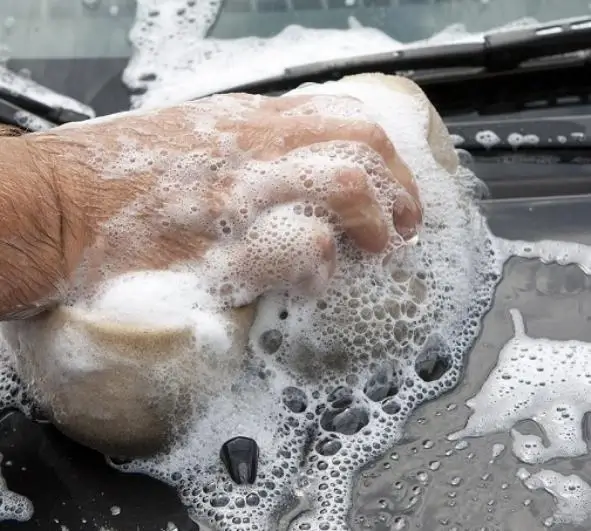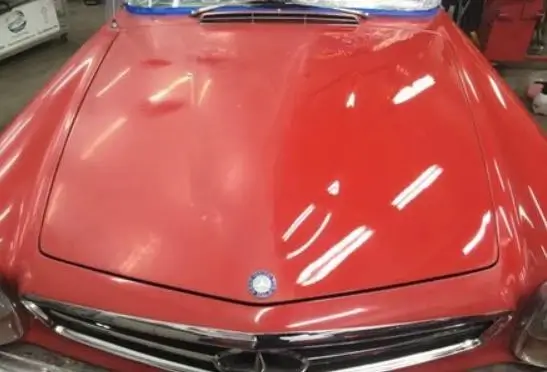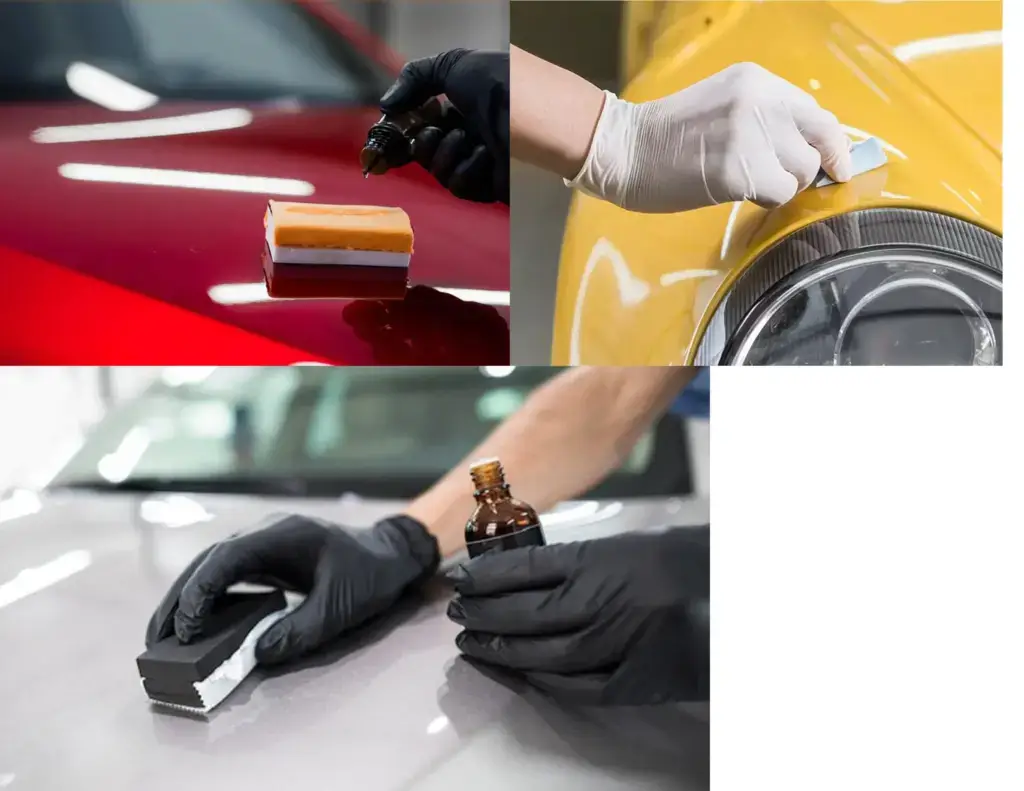Ceramic wax versus ceramic coating
There is a difference between ceramic wax versus ceramic coating
Lots of companies sell ceramic wax and want you to believe it’s as good as a ceramic coating. But when it comes to the ceramic wax versus ceramic coating debate, you really do get what you pay for.
In order to be a true “ceramic” the product has to bond on a molecular level.
Natural wax and synthetic car waxes are attracted to paint molecules, but they don’t chemically bond to them. They’re great for protecting against UV rays and oxidation and they repel water. But they can’t do what ceramic product can; bond on a molecular level.
Here’s a more scientific description of the how ceramic coatings chemically bond to the paint
“Hydrophobic silica displays water resistant properties because of its nanostructure and chemical properties. When applied to a surface of a material, the nanoparticles adhere to the host material and prevent liquids from permeating the rough texture. The water only comes into contact with the tips of the nanoparticles coating the outside of the material. Due to lack of attraction, the water is repelled from the hydrophobic silica” — Wikipedia
Ceramic waxes are are a blend of ceramic additives in a car wax base
Ceramic “waxes” get you a little bit of both worlds; a shine along with some of the benefits of a ceramic product. Ceramic wax contains either natural wax or synthetic polymers along with ceramic additives like silica, quartz, silicone-dioxide or even silicon dioxide (SiO2). Hydrophobic silica, quarts, and SiO2 products chemically bond with your car’s clear coat or paint to repel water and dirt.
However, these hybrid waxes aren’t true ceramic coatings and their application process is different as well. These hybrid products are DIY friendly and apply just like traditional car waxes — wax on, wax off. You wind up with a more protective shine than traditional car wax.
But they are temporary and must be reapplied periodically
True ceramic coatings are much more expensive and harder to apply
True ceramic coatings don’t contain wax. They go on with a rag and require a lot of elbow grease to wipe into the finish. If you want the glassy shine of a car wax, you’ll have to polish the vehicle before applying the ceramic coating.
What are the advantages of ceramic products?
• more wear resistant than waxes or polymer coatings
• provides much long lasting paint protection
• repels water and reduces hard water spotting.
• resists soiling, so you car stays cleaner.
• resists chemical contamination
How ceramic coatings are applied
Surface preparation is key — step 1: remove all previous waxes and coatings
Since ceramic products work by chemically  bonding to the paint, you have to remove any previously applied waxes that can interfere with the bonding process. This is referred to by some ceramic coatings manufacturers as the decontamination phase. The entire vehicle must be washed to remove all previous waxes and coatings.
bonding to the paint, you have to remove any previously applied waxes that can interfere with the bonding process. This is referred to by some ceramic coatings manufacturers as the decontamination phase. The entire vehicle must be washed to remove all previous waxes and coatings.
Step 2: Clay bar and polish
You want a fully smooth surface before you apply any ceramic coating. So you’d clay bar the entire vehicle and then polish to remove fine scratches and bring up the shine in the clear coat
Step 3: Remove polish residue
Polish contains oils and those oil must be removed before applying ceramic coating. Most ceramic coating manufacturers recommend using isopropyl alcohol and a clean towel to remove polishing residue.
Step 4: Fully dry the vehicle
Since a ceramic coating chemically bonds with the paint, it must be completely dry before application. Water spots will prevent the ceramic coating from bonding properly.
Step 5: Apply the ceramic coating
Applying the ceramic coating is an art and is something you should practice on an older vehicle before trying on your expensive ride. Over or under application will produce poor results.
Apply the ceramic coating using the recommended applicator and wipe it onto the paint in even applications. Don’t spread the coating too far.
Step 6: Allow the ceramic coating to cure
With the vehicle in a cool dry place, allow the coating to cure for the recommended time before exposing it to sun or water. Most manufacturers recommend at least 13-15 hours of cure time.
©, 2023 Rick Muscoplat
Posted on by Rick Muscoplat


